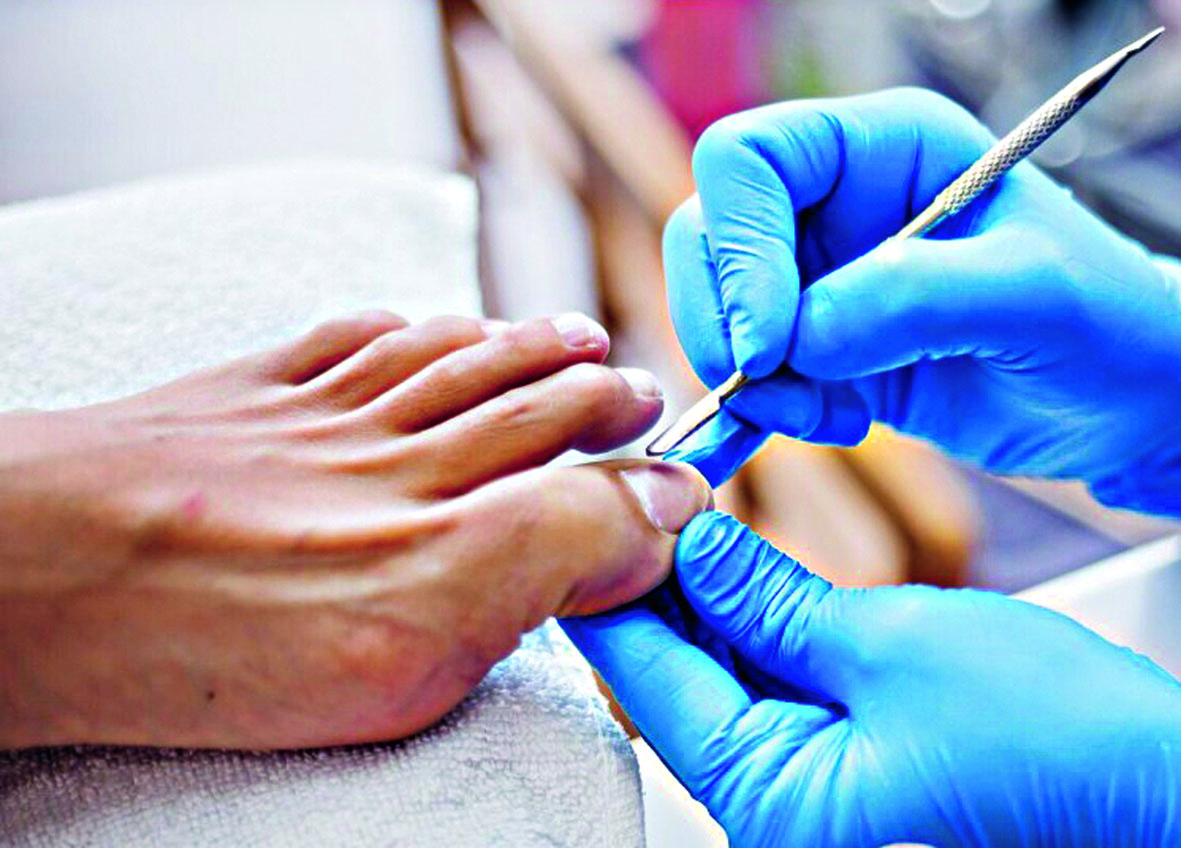Nail It the Right Way
Many people ignore it, but the agony of an ingrown toenail can be a daunting life-changing experience

It’s time to toe the line and do the right thing if you are dealing with the problem of ingrown toenails. Ingrown toenails are a common foot issue. If a toenail grows back into the skin encompassing the nail bed, it is referred to as an ingrown toenail. These may become infected, leading to irritation and pain when pressure is applied to the toe. It most often happens to big toes.
Toenail Woes
Some people are more vulnerable to ingrown toenails than others, either due to genetics, medical history or injury. Ingrown toenails can affect anyone, kids, adults, but athletes, especially runners and soccer players, are at a higher risk. Many celebrities have often shared their painful ingrown toenail woes. Some of them include basketball legend Michael Jordan and NBA star Rudy Gobert, who underwent a surgical procedure for an ingrown toenail.
American actor Mark Wahlberg discussed his toenail surgery on The Ellen DeGeneres Show. English Singer and TV personality Frankie Bridge has also shared her experience with ingrown toenails and advocated for not being embarrassed by foot issues. Eleanor Lee, the Singaporean actress (based in China), had surgery on her big toes due to ingrown toenails on both feet. She had to depend on Quan Yi Fon (mother who is a Singapore TV Host), as a personal “wheelchair” (piggyback) to get around as she recovered. Actor Karishma Tanna also went through surgery for her ingrown nail during the COVID-19 lockdown.
Do Not Ignore
Symptoms of an ingrown toenail typically include pain or tenderness, redness and swelling, and pus or drainage if an infection is present. An ingrown toenail, also known as onychogryphosis, should not be neglected as it can lead to infection, causing increased pain, swelling, and pus formation.
“If untreated, the infection can spread to deeper tissues or the bone, especially in people with
diabetes or poor circulation. Chronic cases may lead to persistent pain, nail deformity, or require surgical removal of part of the nail,” says Dr Geetika Mittal Gupta, medical aesthetician and Founder, ISAAC Luxe.
Home Care
Mild cases can be managed at home with simple remedies. Trim nails straight across (not curved). Avoid pressure on the toe. Sandals or wide-toe shoes can help with healing. Soak your foot in warm water with Epsom salt for 15 minutes three times daily. This softens the skin and reduces inflammation. “Use over-the-counter antibiotic ointments to prevent infection. With ingrown toenail lifter tools, gently lift the nail edge to prevent it from digging into the skin. Sterilise before and after each use. Silicone toe caps or placing a small bit of sterile cotton under the nail edge can relieve pressure and guide growth. Pain Relievers can reduce pain and swelling,” says Dr Sunil Kumar Prabhu, Consultant Dermatologist, Aster RV Hospital, Bangalore.
Pedicure Benefits
A pedicure is considered a mere pampering treatment by many, but for some, it is a necessity. Maintaining good foot hygiene will keep toenails and feet healthy and free from any nail and foot problems. A professional pedicure at least once a fortnight helps to prevent ingrown toenails. Avoid cutting your toenail too short or round, as the nail may grow into your skin. Ensure that shoes allow your toes to rest flat and straight inside the shoe. “Toe trauma, such as banging your toe or getting stepped on, can add to the problem. Keep your feet and toes dry so there is no fungus forming, especially if you wear closed shoes. At the salon, we only treat mild cases of ingrown toenails by trimming the edges. For infected ingrown nails, i.e. severe cases, professional medical treatment is recommended,” states Sunita Makhija, Director, Schnell Hans Salon Spa and Academy, Mumbai.
Seek Medical Care
If you develop an ingrown toenail and wear shoes, walking and standing become a challenging ordeal. Then it is advisable to see the doctor. For severe cases or infected ingrown nails, medical treatment is necessary. Do not neglect pain, swelling, or redness, especially if it worsens despite home care and there is pus, discharge, or signs of infection (e.g., warmth, fever). Ensure tetanus vaccination is up to date, especially for dirty wounds. “If you have a medical condition like diabetes, poor circulation, or neuropathy, then proper foot care is crucial to prevent serious complications or if the ingrown nail keeps coming back,” adds Dr Prabhu.
Available Treatments
Non-invasive treatments for ingrown toenails include: Nail Bracing (Orthonyxia) A small, thin brace (wire or plastic strip) is applied to the surface of the nail to gently lift and straighten it as it grows, reducing pressure on the skin. Dr Geetika says, “Medical tape is used to pull the skin away from the nail edge, relieving pressure and allowing the nail to grow correctly. Topical antibiotics and antiseptics are used to control or prevent mild infections without needing oral antibiotics. Low-level lasers (in select cases) may be used to reduce inflammation and pain—not widely used, but an emerging option.”
Chronic cases may lead to persistent pain, nail deformity, or require surgical removal of part of the nail. A doctor can help provide relief through a simple surgical procedure that removes the portion of the nail that’s piercing your skin. However, if the pain is severe or a person has a badly ingrown toenail, they may need surgery to remove part or all of the nail to prevent further complications.
“Total nail avulsion refers to the complete loss or detachment of the nail from its nail bed, which may be caused by trauma, infection, or certain medical conditions. Surgical management aims to manage the underlying injury, prevent complications, and promote proper healing,” adds Dr Prabhu. Timely treatment can prevent serious complications of ingrown toenails and keep you comfortable on your feet.

